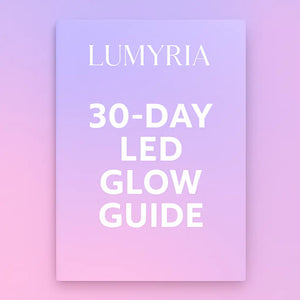Introduction: Decoding the Colours of Light Therapy
In our previous post, we explored the fascinating science of how LED light therapy energizes your skin cells for rejuvenation. But not all light is created equal! Different colours, or wavelengths, of LED light penetrate the skin at different depths and trigger distinct biological responses. Two of the most studied and widely used colours in skincare are Red and Blue light.
Understanding the unique benefits of each can help you choose the right treatment for your specific skin goals. So, let's dive into the world of Red and Blue light therapy – which one is your skin craving?
The Power of Red Light: The Great Rejuvenator
Often hailed for its anti-aging properties, Red light typically uses longer wavelengths (around 630-660nm) that penetrate deeper into the skin. Its primary actions include:
- Boosting Collagen & Elastin: Red light directly stimulates fibroblasts, the skin cells responsible for creating collagen and elastin. This helps to plump the skin, reduce the appearance of fine lines and wrinkles, and improve overall firmness.
- Improving Circulation: It can enhance blood flow, bringing more oxygen and nutrients to the skin cells, contributing to a healthier glow.
- Reducing Inflammation & Promoting Healing: Red light has known anti-inflammatory properties, which can help calm redness and accelerate the skin's natural healing processes.
Who benefits most from Red Light? Anyone concerned with signs of aging – wrinkles, loss of firmness, dullness – or those looking to generally improve skin health and radiance.
The Clarity of Blue Light: The Potent Purifier
Blue light operates at shorter wavelengths (around 415-465nm) and works closer to the skin's surface. Its main claim to fame is its antibacterial effect:
- Targeting Acne Bacteria: Blue light is specifically known to kill Cutibacterium acnes (formerly P. acnes), the bacteria primarily responsible for causing acne breakouts.
- Reducing Sebum Production: Some studies suggest it may help regulate oil gland activity, further assisting in controlling acne.
- Calming Effect: While killing bacteria, it can also have a calming effect on associated inflammation.
Who benefits most from Blue Light? Individuals struggling with mild to moderate acne, blackheads, whiteheads, and oily skin.
Can You Use Both? The Power of Synergy
Many advanced LED devices, like the LUMYRIA mask, recognize that skin concerns are often multifaceted. They might offer:
- Multiple Colour Settings: Allowing you to choose Red or Blue light depending on your needs that day.
- Combined Light Therapy: Some modes may use both Red and Blue light simultaneously or sequentially to address both aging and acne concerns, or to leverage the anti-inflammatory benefits of Red light alongside the antibacterial action of Blue light.
Which Colour is Right for You?
- Primarily concerned with wrinkles, firmness, and overall rejuvenation? Focus on Red Light.
- Primarily struggling with breakouts and acne? Focus on Blue Light.
- Dealing with both aging signs and occasional breakouts, or inflammation? Look for a device offering both Red and Blue light options, like LUMYRIA, to tailor your treatment.
LUMYRIA: Targeted Light Therapy, Effortlessly at Home
The beauty of modern technology is bringing these targeted treatments into your home. The LUMYRIA mask is designed to deliver specific, effective wavelengths of light in a comfortable, luxurious, and easy-to-use format. No more scheduling expensive appointments – achieve your skin goals on your terms.
Conclusion: Choose Your Light Wisely
LED light therapy offers powerful, non-invasive solutions for common skin concerns. By understanding the distinct roles of Red and Blue light, you can make informed choices about your skincare routine and select treatments that truly target your needs.
Curious to learn more about how LUMYRIA harnesses these powerful lights? Visit our product page here or explore other articles on our blog!



